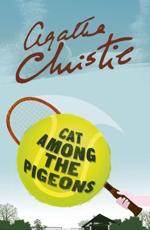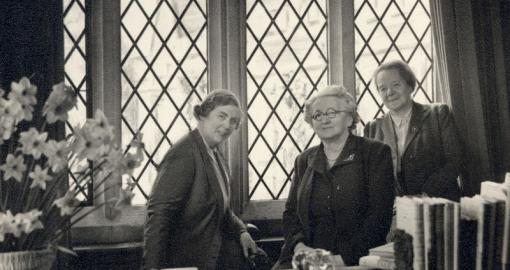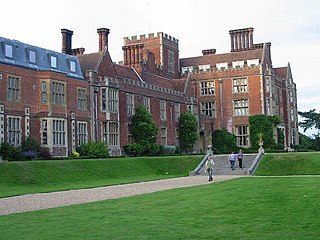
Poirot Score: 68
Cat Among the Pigeons
☆☆☆
This is the fourth book in a sequence to explore the underbelly of British institutional life. Christie now turns her attention to The Best Boarding School for Girls in England, as a natural progression from a boys’ borstal (see They Do It with Mirrors)! Unlike Christie’s previous thriller Destination Unknown [1954], this is a good page turning, exiting read. It is an interesting mixture of both thriller and whodunit.
I have given this book a relatively low Poirot Score, because it is impossible to guess every aspect of the highly complex plot. Readers will struggle in vain to come up with a unified theory to fit all the facts, as Monsieur Poirot always harangues us to do. Some parts of the final solutions are arbitrary. Some readers will think this rather mean for such an entertaining read.
Click here for full review (plot spoilers ahead)
Trivia
Dedication ‘ for Stella and Larry Kirwan’
Stella Kirwan became Christie’s secretary. Her husband, Larry was Director and Secretary of the Royal Geographical Society from 1945, and helped organise the first ascent of Mount Everest in 1953. Kirwan was Knighted in 1972. From 1929 to 1934 Kirwan was assistant director of the Archaeological Survey of Nubia of the Egyptian Department of Activities. This must be where the Mallowans and the Kirwans met and became friends. Kirwan was an Oxford undergraduate at Merton College, but left before being awarded a degree. Kirwan was three years younger than Mallowan, so I do not think they met in Oxford, but in the Middle East.
Ramat
Ramat is a fictional country in the Middle East where a revolution takes place. Ramat is a Hebrew rather than an Arabic word, meaning Heights.
English Boarding Schools: Meadowbank and Benendon
English Boarding Schools have a long tradition. The English upper classes used to send their children to boarding school, or have home tutors if the children were sickly. People employed in the Empire and Colonial Services sent their children back to Britain for their education. As the parents were abroad and travel was difficult, children may not have seen their parents for many years. Rudyard Kipling was an example. His father was curator of the Lahore Museum. Kipling at the age of five, was brought to England and did not go back to his family home in India until he was nearly seventeen. Kipling had a miserable and difficult childhood.
Miss Agatha Miller did not have a boarding school education, as her father had been swindled out of his fortune when she was still young. Agatha Miller’s older siblings did get an education, so Christie as a child would have heard her old brother and sister talk about boarding schools. Monty Miller went to Harrow, Margaret went to a school that became known later as Roedean.
Christie’s daughter, Rosalind went to several boarding schools and then to Benenden, which Christie is thought to have used as the inspiration for Cat Among the Pigeons. Benendon was founded by three teachers in the 1920s who retired in 1954, five years before this book was published. In Cat Among the Pigeons, Miss Bulstrode and Miss Chadwick started Meadowbank school together, and had turned it into a great success. At the start of the book Miss Bulstrode is thinking of retirement.


Benendon School
In a letter Rosalind Christie wrote her to her mother [1931] when she was twelve years old:
Where are you?…I’m glad you have arrived safely in Nineveh.
This is very remniscent of school girl Julia Upjohn’s remark in Cat Among the Pigeons
Mummy’s gone in a bus to Anatolia
Underwired Bras
English girls are not very often women at the age of fifteen
Christie was a conscientious social commentator. As she normally wrote contemporaneously, trends in fashion are documented in her novels. Although women have always required supportive undergarments, the underwired push up bra of the Arabian Princess in Cat Among the Pigeons shocks Matron at the school. Underwired breast support garments were patented in Victorian times, but in Christie’s youth most women wore corsets. Changes in clothing manufacture cause a huge surge in the popularity and affordability of underwired bras in the 1950’s in Britain for younger women.

